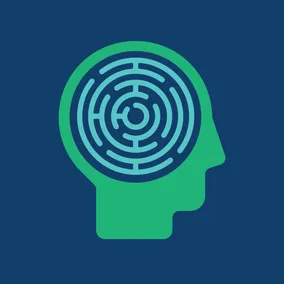How to Unlearn What You Know

Natalie Reich, Former Brand Strategist
Article Categories:
Posted on
Becoming a Smarter Web Writer Without Dumbing Things Down
Since becoming a Creative Copywriter, one of the things I’m responsible for is quickly ramping up on new industries so I can write clear, compelling copy for our clients. This is actually one of the most challenging tasks we’re given, because we need to go from having a casual understanding of a given topic to knowing enough to write about it in a way that is: 1) accurate, 2) pleasing to the client, and 3) comprehensible to their audiences, which often range all the way from laypeople to experts.
The problem of communicating effectively to a variety of audience groups is a frequent challenge for many clients. In some organizations, such as universities and nonprofits which are largely staffed with scientists and other specialists, the language they use to communicate tends towards the long, complicated, and academic. This type of content is often quite unintelligible to someone simply trying to learn what the organization does. Writing and editing content in these cases can be pretty tough, especially since we’re usually working with experts (the clients) but starting from scratch ourselves.
So, how do writers find the sweet spot between writing “like an expert” (and making the audience feel dumb) and writing for the lowest common denominator (and dumbing down your writing)? Here are a few pointers I’ve found useful.

Leverage your closest resource: you. Before starting the deep dive that gets you up-to-speed on a new topic, write out everything you already know about it. By doing this, you’re using your pre-knowledge self as a sort of “control group,” an easy-to-reference-later guide from when you were merely a member of the general public. This guide might also reveal common misconceptions about the subject matter that you can actively try to clarify when writing.
Leverage the next closest resource: other people. This could be coworkers, friends, family, or even strangers on the internet filling out a survey. Consulting these groups has several benefits: for one, you can gather their thoughts either before, during, or after a writing task to get a sense for what the average person knows and seeks to learn when searching for information online. For another, they can serve as a gut-check on the content you’ve written to make sure it’s not so high-falutin’ that you’re running the risk of alienating audiences with the final product.

Check against the original material. It can be easy to get stuck in the weeds when you’re writing about something you previously knew little about. I’ve found myself sliding into the same trap as our clients: keeping written web content complex and verbose because it feels more “accurate.” Fighting against this tendency not only forces you to transform complicated material into something better suited for readers on the web, it’s often exactly what the client needs when hiring an outside writer (whether they know it or not).
Ultimately, these methods are about building and maintaining empathy for the audiences you — and your client — are trying to reach. This empathy should also extend into other, more concrete aspects of your writing. One example of this is avoiding jargon-y terms: non-experts likely won’t be familiar with them, and experts don’t need to see them to know what you’re talking about. Another example: relentlessly culling long, dense sections of copy into their most succinct versions. In this case, the empathy comes into play by respecting the amount of time required from your users to read their chosen content.
If you find yourself getting stuck when trying to turn a foreign subject into something more readable, start with empathy. That’s not to say you won’t also need to employ some more technical approaches to translate your source material, but in the end, web writing is about making your audience feel both informed and welcomed.
